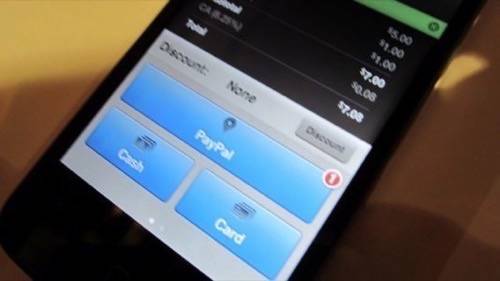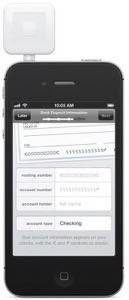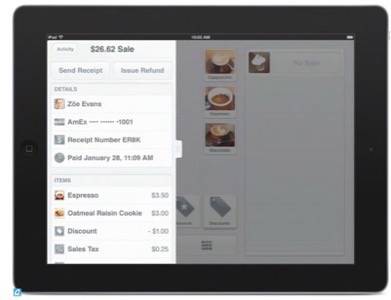
Mobile payments. The phrase has hit the popular conscious over the past several years as smartphones have permeated the lives of people around the world. Pay for anything you want without a plastic card, without cash, without your checkbook. Just use your smartphone to buy anything you want. There are many different ways to make payments or receive payments with a mobile device. We give our recommendation for the best mobile payments option below.

Many Ways to Pay
The tem “mobile payments” encompasses many types of transactions. Large companies and enterprising startups all claim to offer the brightest and best in mobile payments – with very different offerings. So a little context is required before we can single out the best mobile payments app.
The various tiers of mobile payments can be broken into two high-level groups:
1. The ability to buy digital goods with your mobile device. Fundamentally no different than buying a digital product through your computer but often with a different payment structure – such as the ability to charge it through your carrier. Digital goods could include apps, music, e-books or video subscriptions, among other items.
2. The ability to buy physical goods with your mobile device. The end goal: total disruption of the cash-based transaction ecosystem. This could include the ability to accept credit cards from smartphones or making the smartphone the actual vehicle of payment.
Then there are the different ways to perform mobile transactions:
- Carrier Billing: Charging a digital or physical good through your mobile carrier bill.
- Near Field Communications (NFC): Financial information is stored on a device and transactions are made through a “tap” between the smartphone and a point-of-sale system.
- QR Codes/Code Scanners: As with NFC, payment information is stored on the device or can be accessed through the device from the cloud. But with QR codes, either the merchant scans the code on the buyer’s phone with another smartphone or tablet, or the buyer’s phone uses its own LED sensors to “beam” out information that a barcode scanner can read.
- Mobile Card Readers: Often referred to as “dongles,” these devices plug into a smartphone or tablet and let merchants swipe credit cards.
- Stored Payment Information: This is when a company holds buyers’ credit card information in its system and allows them to easily purchase physical or digital goods through “one click.” Amazon and PayPal are leaders here, but Google and Apple also store user information to allow payments on mobile devices.
- Mobile Wallets: This generic term covers mobile payment services that store payment information on or through a device. They typically offer other services, such as loyalty programs, coupons, deals and offers (which are all technically different things). A mobile wallet can use any type of payment system to make the transaction.
Given all of the above, we applied the following criteria to determine our recommendation for the Best Mobile Payments App:
- Must be able to purchase physical goods.
- Must have a mobile wallet component.
- Must be as ubiquitous as possible – supporting, at the very least, Android and Apple’s iOS.
- Must have the potential to fundamentally change how payments are made.
Our Recommendation: Square
Square, a company created by Twitter co-founder Jack Dorsey, helped start the mobile payment phenomenon. When it first hit the market, Square was primarily a dongle solution. The dongle (called a “Square”) plugs into the headphone jack of a smartphone or tablet and through an app lets merchants accept credit cards on their devices.
The dongle concept is simple and very powerful. It boils down to giving the masses the ability to make and receive digital payments from anywhere. That could be the local farmers market or an out-of-the-way bike shop on your favorite path. All that the merchant needs is a smartphone and some type of data connection. Square (and its many dongle competitors) is ushering in a new era of transactions that makes cash (which is still how about 85% of all transactions are made) irrelevant.
While Square started as a dongle, it has evolved a much richer feature set to lead the way in mobile payments. The Square Register turns an iPad into a point-of-sale system, while the Square Card Case integrates loyalty cards that can be used for payments through the register. Consumers can even make payments through their smartphones at a merchant that has a Square Register just by coming in and saying their name. Square and the merchant have the consumer’s financial information on file, and making a payment is as simple as saying “charge it to my account.” Think of it like having an open tab at your neighborhood pub.
For consumers, Square is a free app on iOS and Android. For merchants (or anybody who wants to accept credit cards with their smartphone), the dongle and app are free with an industry-competitive 2.75% fee per transaction.

Embarrassment of Riches: Other Recommendations
While Square may be a leader, an incredibly diverse set of companies has entered the field of mobile payments.
Google Wallet is a potentially disruptive option. Essentially, Google Wallet is an NFC-enabled digital app that stores financial information, loyalty cards and deals. But since its release in 2011, many mobile carriers have blocked the app from running on their networks as they work out NFC solutions of their own. And Google Wallet is available only on select Android devices.
With some justification, PayPal loves to think of itself as a leader in mobile payments. Storing information on the buyers smartphone, PayPal can be used to purchase both physical and digital goods. It also offers NFC money transfers between people just by bumping smartphones. While PayPal may be one of the largest digital payments providers, it still lacks widespread presence in retail stores.
Other dongle providers that compete with Square include Intuit’s GoPayment, Verifone, Erply and others. An interesting startup in San Francisco called Mobeam uses light to beam payment information into a barcode scanner. One of the fastest growing startups in the mobile payments ecosystem is LevelUp from Boston-based SCVNGR. It is working toward the concept of “interchange zero” where it does not cost merchants anything to transmit payments. Dwolla, out of Des Moines, Iowa, offers an interesting ecosystem for local mobile payments. Jumio and Card.io allow merchants to use a smartphone camera to scan credit cards for payments.
Meanwhile, some of the biggest companies in the world are working on mobile payment solutions. A partnership between T-Mobile, AT&T and Verizon is working on an NFC solution called Isis. Amazon offers its “1-Click” purchasing through mobile phones for both physical and digital goods. The major transaction companies including MasterCard, American Express and Visa are all working toward some type of digital wallet.
Even with all the competition, though, Square’s unique combination of features, ease of access and competitive pricing make it today’s leader. But the mobile payments space is still evolving rapidly and who will ultimately rule the future of currency remains very much up in the air.









